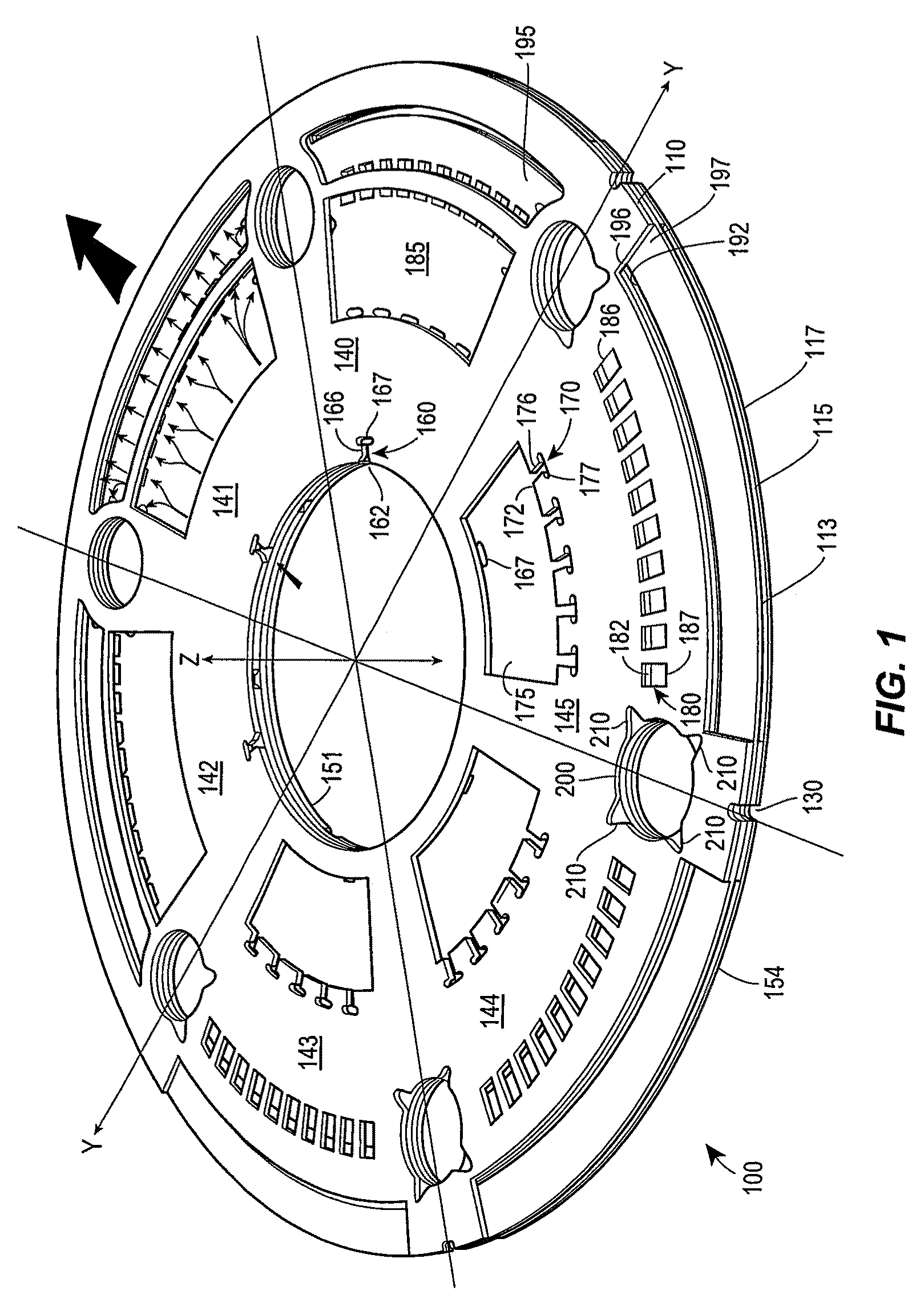Fluid pressure reduction device for high pressure-drop ratios
a technology of fluid pressure reduction and drop ratio, which is applied in fluid dynamics, lighting and heating apparatus, transportation and packaging, etc., can solve the problems of high noise within the system, damage to vibration, and application may produce unacceptable levels of aerodynamic noise, so as to reduce any associated aerodynamic noise
- Summary
- Abstract
- Description
- Claims
- Application Information
AI Technical Summary
Benefits of technology
Problems solved by technology
Method used
Image
Examples
Embodiment Construction
[0018]An example fluid pressure reduction device for a diffuser is shown in FIGS. 1 and 2. The example fluid pressure reduction device or diffuser uses a stack of annular plates to provide multiple pressure reduction flow paths between inlets and the outlets of the device. The stacked plate assembly may be characterized as follows: 1) the stacked plate assembly has multiple pressure reduction flow paths having inlets at a hollow center and outlets at an outer perimeter radially aligned in individual flow sectors; 2) the pressure reduction flow paths are generally radial and are defined by more than at least two pressure reduction stages coupled in series with each pressure reduction stage being coupled to at least one subsequent pressure reduction stage in an adjacent annular plate; and 3) each stage includes one or more apertures where the inner or first and second stage apertures have well-rounded or well-tapered inlet and an abrupt discharge and the outer stage or third or fourth...
PUM
 Login to View More
Login to View More Abstract
Description
Claims
Application Information
 Login to View More
Login to View More - R&D
- Intellectual Property
- Life Sciences
- Materials
- Tech Scout
- Unparalleled Data Quality
- Higher Quality Content
- 60% Fewer Hallucinations
Browse by: Latest US Patents, China's latest patents, Technical Efficacy Thesaurus, Application Domain, Technology Topic, Popular Technical Reports.
© 2025 PatSnap. All rights reserved.Legal|Privacy policy|Modern Slavery Act Transparency Statement|Sitemap|About US| Contact US: help@patsnap.com



